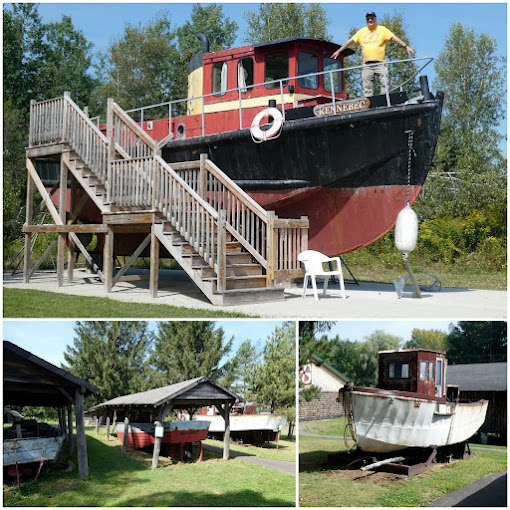The Maine Woods has long been a working forest, and the Patten Lumbermen’s Museum tells the story of how this industry developed during the last 175 years. The museum also serves as a visitor contact station for Katahdin Woods and Waters National Monument. The museum was an hour’s drive north from our cabin, but that was our destination for today.
The reception center has the feel of a small-town museum with hundreds of historic photographs and a video that we were encouraged to watch. I surprised myself by enjoying the video and finding it to be very well-done.
The heart of the museum, however, is located out the back door. Here, nine buildings reflect both the life and work of a lumberman. Two camps, one from the 1820s and another more modern camp, show how men were housed and fed.
 |
| 1820s Logging Camp |
 |
| A More Modern Double Camp, with a "Dingle" Separating Cooking and Sleeping Quarters |
Other buildings include a tool shed, portable saw mill, blacksmith shop, and equipment shed. A horse hovel shed and Lombard shed house heavy equipment and gas log haulers.
 |
| Multiple Buildings Housing the Equipment Required by Lumbermen |
 |
| Tools Used by Lumbermen |
One might be surprised to see the number of boats here, but rivers were key to the lumber industry. The first log drives came to Maine in the 1800s when loggers would harvest trees in the winter, stockpile the logs until spring, and then dump the logs in the river to float them downstream to the mills. Bateaux were used on the rivers to transport supplies upriver to the camps and to break up log jams, while boom boats and tug boats sorted and pushed logs on the log drives. Mike decided to pose on the Kennebec tug boat, which was used on Maine’s last log drive in 1976.
 |
| Boats Used by Lumbermen |
On the way back to our cabin, Noreen and Mike decided to make a detour into Katahdin Woods and Waters National Monument. We only went as far as the bridge, but at least they can claim they’ve set foot in the park.

No comments:
Post a Comment